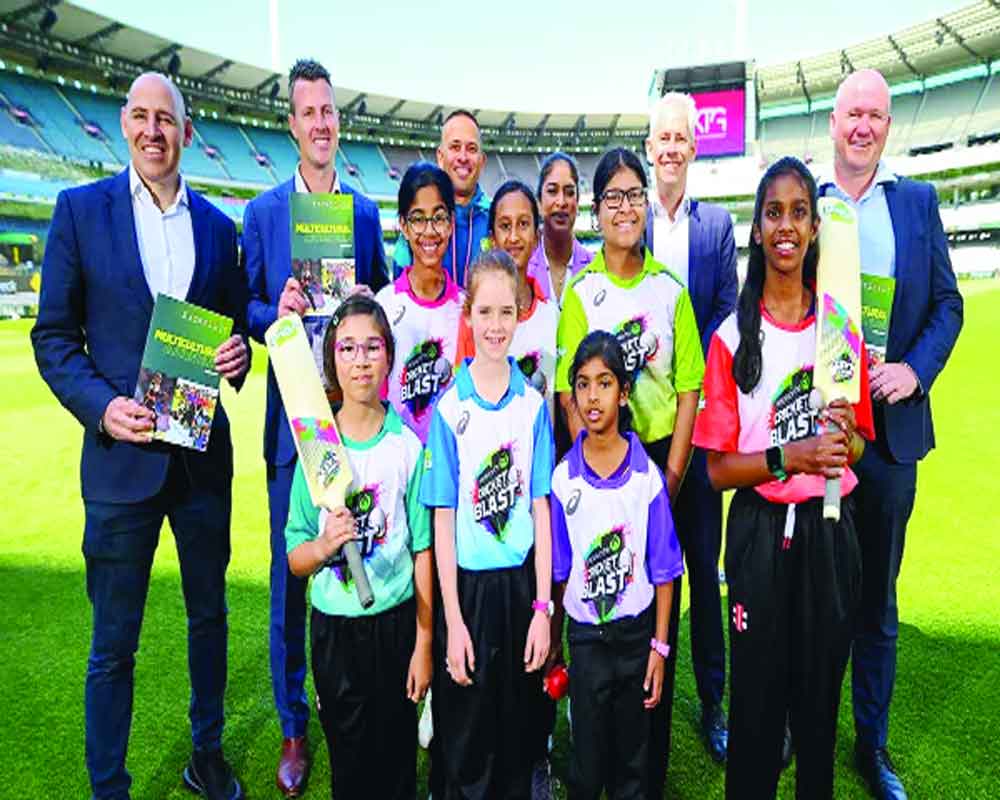As Indo-Australian relations continue to thrive, cricket will continue to add ballast at various levels—sporting, community and diplomatic, MAP can be a major catalyst
Australian demography has undergone a dramatic transformation, with communities originating from South Asia, predominantly Indian, making a significant presence across Australian society.
According to the Australian Census 2021, South Asians are amongst the fastest-growing populations including 30% of Australians born overseas. Of these 48.5% of the Australian population are multicultural and 4% (1.1 million) have a South Asia birth or descent. Since 2013, Indian migrants recorded a 128% rise (from 295,000 to 673,000), Sri Lankan 53% (86,000 to 132,000), Nepalese 392% (25,000-123,000), Pakistan 200% (30,000-90,000) and Bangladesh 82% (28,000-51,000).
This demographic transformation has not escaped Cricket Australia’s attention which launched the pathbreaking Multicultural Action Plan (MAP) 2023-2027 on 22 December informed by hundreds of hours of research and engagement across the community.
Supported by the Australian Government Legacy Fund, the MAP primarily aims at the South Asian community, wherein India is expected to be the key driver of growth in the coming years. Indian diaspora would soon overtake as the largest migrant community in Australia surpassing English, and the MAP strives to create a sense of belongingness and ownership amongst them.
The MAP also highlights the 90,000 plus attendance during the India versus Pakistan match and the 85,000 plus attendance during the India versus Zimbabwe match during the ICC T20 World Cup in 2022 in Australia. Indian-Australian cricketers namely Lisa Sthalekar and Allana King, along with Harmanpreet Kaur the Indian captain feature prominently in it. In addition, Usman Khawaja, the Pakistani-origin cricketer holds a pivotal place for his inspirational struggle to make it into the national squad, and for his Foundation’s Cricket Blast program for kids in schools and the community.
The Multicultural Action Plan (MAP) hopes to create opportunities; break down barriers; build trust in relationships; and make a difference in the community. The rationale is simple: engage with the community which allows Cricket Australia to tap into the larger talent pool in the future, generate more participation and revenue from their participation, enlarge its fan base and encourage community members to take on more leadership roles.
Cricket, therefore, is becoming a vehicle of social cohesion and unity for all Australians, and championing diversity and inclusion at all levels.
In the coming years, MAP will roll out the following ten key deliverables: bespoke social cricket programs, products and tournaments; community coach and voluntary leadership program; working with foundations and partners to enhance talent pathways; elite coach and umpire bursary scheme; South Asian monitoring and leadership program; cultural awareness and unconscious bias training; new multicultural Ambassador program; engaging with new media channels with positive storytelling; new cultural festivals and enhanced match experience; and more personalised engagement through enhanced data capability.
Of these, the cultural awareness and unconscious bias training is very well-thought-out and also critical for promoting greater understanding in Australian cricket of their unconscious bias and the cultural differences of the community and breaking down existing barriers in the game.
MAP is aiming for 100,000 South Asian registered participants in Australian cricket by 2027, and doubling the numbers of South Asian cultural background players in first-class teams as well as Women Big Bash League and Men’s BBL and 2027 to 8%.
MAP is expected to boost recruitment of more employees from the South Asian background, since only 2% of South Asians were on Australian cricket boards, and executive teams in 2022, and over 18% were on the Cricket Australia payroll. Cricket Australia has also created a specialised position of Multicultural Officers at the Queensland Cricket and Western Australian Cricket Association to introduce new initiatives and engagement programs and gather feedback for the Action Plan.
Queensland Cricket’s successful taped ball format has also found a special mention in the MAP. In this format —the Multination Cup 2023 involving India, Pakistan, Nepal, Bangladesh and Afghanistan; Rising Stars U-13 Junior Tournament and Corporate Cup involving corporate companies have created a vast constituency of cricket lovers who have been either missing out due to time and physical constraints or limited opportunities.
Undoubtedly, cricket continues to enrich Indo-Australian bilateral narrative and ties and the political leadership on both sides time and again very eloquently uses the appeal of the game to promote deeper understanding and friendship. In March 2023, Queensland Cricket led a delegation to Gujarat, spearheaded by its CEO Terry Svenson, deputy chair of the QC Board Ian Healy, former cricketer Adam Dale and the author, to attend the fourth test match of the Border-Gavaskar series. Their visit coincided with the meeting between Indian Prime Minister Narendra Modi and his Australian counterpart Anthony Albanese at the majestic Modi stadium. This visit built Queensland Cricket’s contacts with senior BCCI officials such as Jay Shah- BCCI secretary, Roger Binny-BCCI president, Dhanraj Nathwani-president Gujarat Cricket Association, Colonel Arvind Singh-COO, Gujarat Titans and several business leaders.
The visit is expected to yield medium to long-term cricketing exchanges of players, coaches, administrators and teams between the two sides in the coming years. Queensland Cricket is also in discussion with the Baroda Cricket Association to reach an understanding to this effect and is also expected to pick up the threads of discussion with the Karnataka Cricket Association.
As Indo-Australian relations continue to thrive, cricket will continue to add ballast at various levels—sporting, community, diplomatic and also commercial. In this context, Cricket Australia’s Multicultural Action Plan is very timely in positioning the South Asian/Indian diaspora at the forefront of its strategy, which offers a historic opportunity for the Indian community champions to invoke their love of cricket for an creating an inclusive, diverse and multicultural society and a stronger Comprehensive Strategic Partnership.
(The writer is CEO and Executive Director Institute for Australia India Engagement and Editor-In-Chief, of Australia India News and Project Lead-Multiculural, Queensland Cricket; views are personal)


























